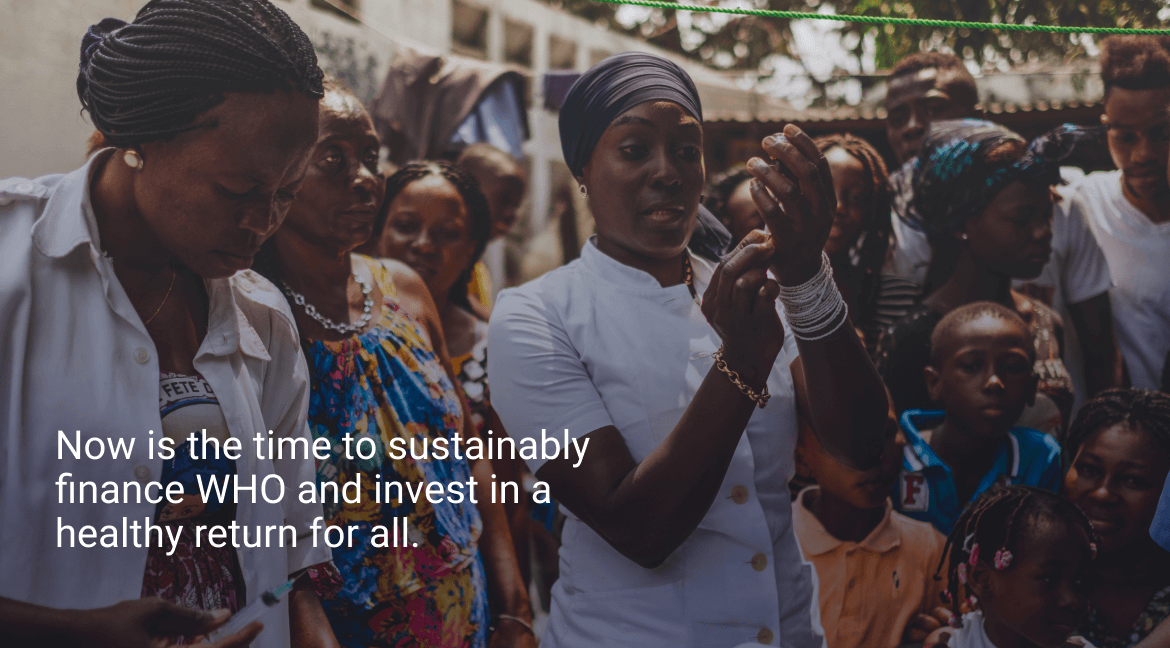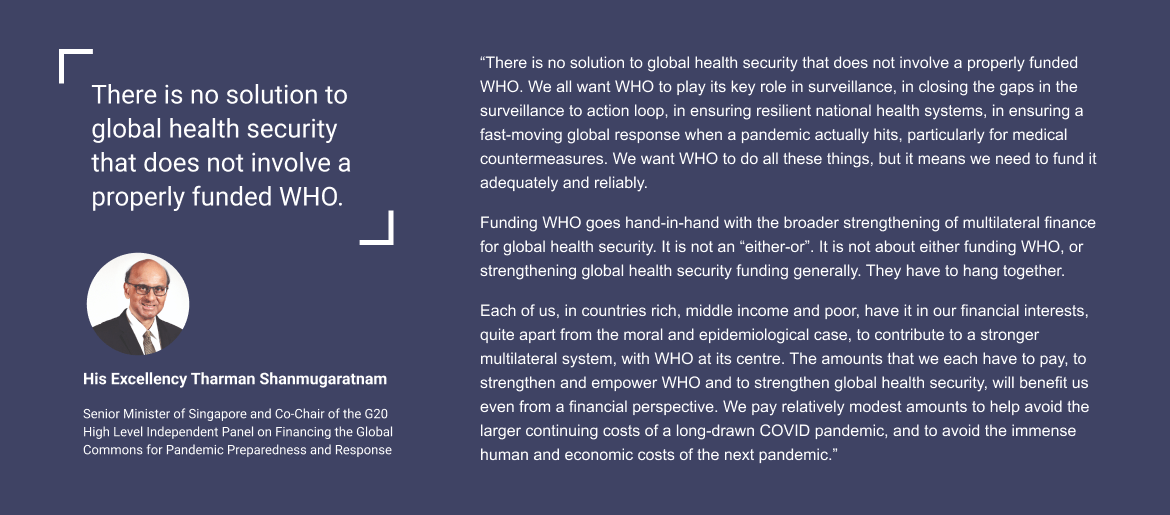
A healthy return
Executive summary
For more than 70 years, WHO has been the cornerstone of the global health architecture and has played the leading role in improving global health during a period of unprecedented improvement in human well-being and longevity. Today, the importance of improved health outcomes is increasingly recognized from an economic perspective, and the value of health capital as a whole may be at least as large as the value of all other forms of capital combined. Spending on health is an investment which underpins the quality of life, happiness and prosperity.
WHO’s Thirteenth General Programme of Work, 2019–2023 2, focuses on making a measurable impact on people’s health in all countries. Its Triple Billion targets set the course for WHO to support the world to ensure that one billion more people benefit from universal health coverage, one billion more people are better protected from health emergencies, and one billion more people enjoy better health and well-being by 2023.


However, with disruptions caused by COVID-19 exacerbating slow progress toward the Triple Billion targets, the world is far off track to achieve these global goals. Extending the timeline of the Thirteenth General Programme of Work from 2023 to 2025 to achieve these targets is a necessary step.
Investment in WHO is catalytic by nature, meaning that funds invested in WHO are used to support Member States in taking action on health issues. This is done through the three key functions of WHO – leadership, development of technical products and country support. An example of catalytic action is development of technical products such as guidelines and the prequalification of medicines, vaccines and medical devices which through one process can achieve benefits in all 194 Member States.
According to a new analysis contained here, the quantifiable return on investment in WHO is very substantial. The cost of WHO in net present value terms over the coming 10-year period, 2022–2031, is US$ 33 billion and the public value created as a result of this investment, in the most conservative estimation possible, is likely to be between US$ 1.155 trillion and US$ 1.46 trillion. The resulting return on investment is US$ 35 for every US$ 1 invested in WHO.


The disruptive shock of the COVID-19 pandemic has sharpened global awareness of the value of health and the need for investment in it. Yet despite this, in the 2020–2021 biennium, only 16% of WHO’s budget was accounted for by assessed contributions, which are provided by all Member States. Increasing the proportion of assessed contributions to cover a greater part of the base budget of WHO’s programme budget would create a secure, sustainable financing stream, enabling a greater focus on fulfilling the core aims of the Organization.
There has never been a more critical moment to invest in WHO, and strengthen the unique role it plays in global health. Now is the time to sustainably finance WHO and invest in a healthy return for all.
- Thirteenth General Programme of Work, 2019–2023: promote health, keep the world safe, serve the vulnerable. Geneva: World Health Organization; 2019 (WHO/PRP/18.1; https://apps.who.int/iris/handle/10665/324775/).
- In resolution EB150.R4, WHO’s Executive Board recommended that the Seventy-fifth World Health Assembly in May 2022 extend the endpoint of the Thirteenth General Programme of Work by two years from 2023 to 2025.
